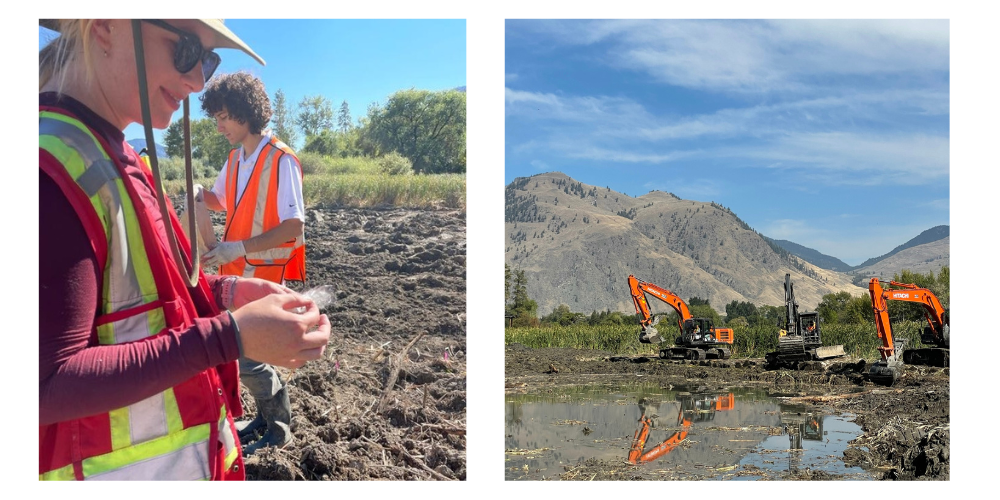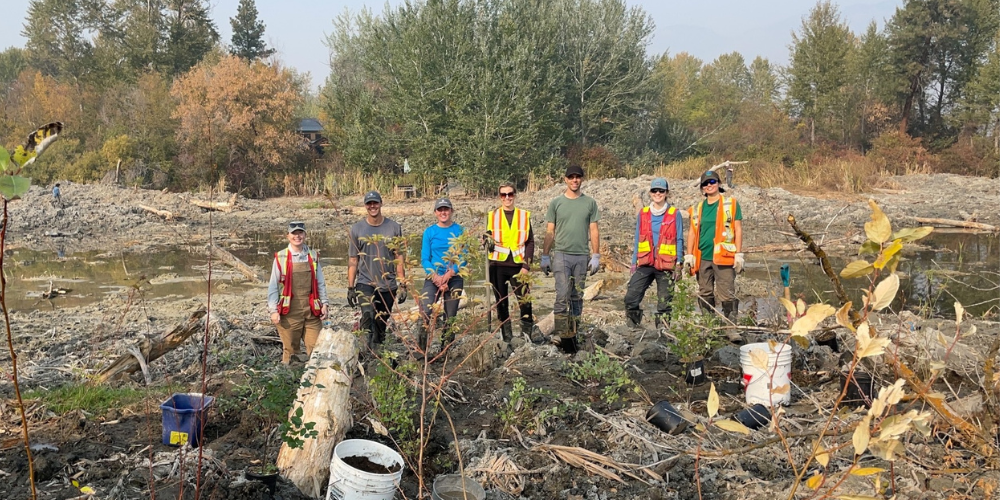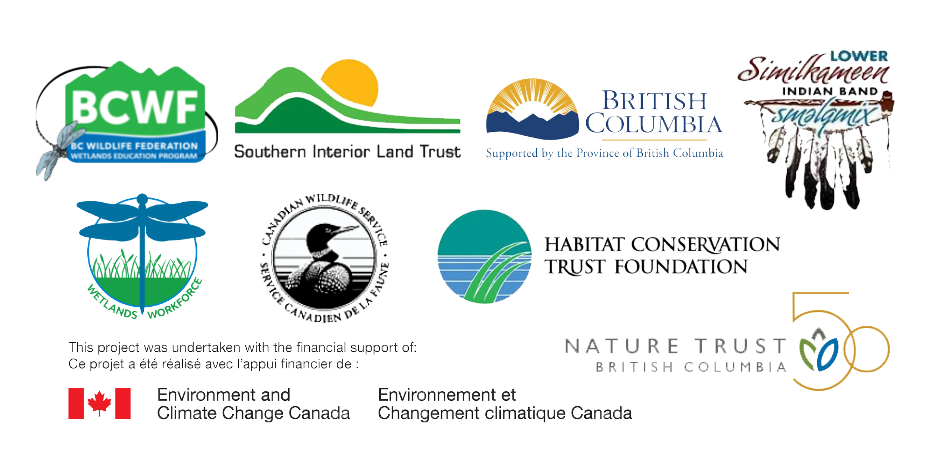After many years of planning, work is finally underway to restore Ginty’s Pond to an open water ecosystem. An essential wetland habitat in the interior, the conservation efforts at this wetland will protect several federally listed species at risk, such as the Yellow-breasted Chat, Western Screech Owl, Interior Snakes, Great Basin Spadefoot, and Western Painted Turtles.
Although this unique oxbow wetland was visibly cut off the Similkameen River due to diking, it was still connected to the river through the water table underground. Not only will restoration efforts on this site support B.C.’s native species and biodiversity but it will also provide opportunities for members of the community to work together on future enhancements.
“Many locals can still remember years ago skating on the frozen pond in the winter and kayaking during the summer,” said Cassie Friesen, Wetlands Workforce Southwest Pod Field Crew Supervisor. “This project will bring back those opportunities, allowing the community to get back into nature.”
 Left – Cassie Friesen, Wetlands Workforce Field Crew Supervisor spreads milkweed seeds on site. Right- excavators deepen pools at Ginty’s Pond.
Left – Cassie Friesen, Wetlands Workforce Field Crew Supervisor spreads milkweed seeds on site. Right- excavators deepen pools at Ginty’s Pond.
This past September, Southern Interior Land Trust (SILT) worked in collaboration with the Lower Similkameen Indian Band (LSIB), Nature Trust of BC, B.C. Wildlife Federation’s Wetlands Workforce, and the Province of British Columbia to deepen and restore 1.2 hectares of open water wetland habitat and 0.5 hectares of new riparian woodland-shrub habitat.
In addition to the pool enhancement, collaborators and volunteers worked on ongoing maintenance and monitoring efforts to continue to support this important habitat. Youth from Keremeos Secondary School visited the site in September to disperse native milkweed seeds and add small woody debris to the site. In October, 40 Grade 8 students from Similkameen Elementary Secondary School installed 150 native plants on the site. An additional 650 plants were installed by project collaborators.
 Project partners from Nature Trust of BC, Province of BC, Lower Similkameen Indian Band, Wetlands Workforce and Southern Interior Land Trust pose during a Ginty’s Pond planting day.
Project partners from Nature Trust of BC, Province of BC, Lower Similkameen Indian Band, Wetlands Workforce and Southern Interior Land Trust pose during a Ginty’s Pond planting day.
A key facet of Ginty’s Pond enhancement was focused on controlling cattail encroachment. Jessie Spence, Wetlands Workforce Southwest Pod Field Crew Supervisor, explains the importance of managing cattail:
“Cattail marshes can be beneficial ecosystems on the landscape, but oxbow wetlands like Ginty’s Pond are few and far between. There is a lot of value in restoring the pond, opening it back up to create a shallow open water ecosystem. This creates diversity in both the plant community and habitat for local wildlife.”
Restoring Ginty’s Pond is an ongoing effort that will continue well into the seasons and years ahead. Upcoming monitoring and maintenance include removing invasives in the spring before they flower and seed, installing a wildlife camera and hydro pole, and monitoring important wildlife use such as noting eggmasses of Columbia Spotted Frogs and Great Basin Spadefoot as well as observing the Western Painted Turtle nesting area.
This project is made possible through support from:

